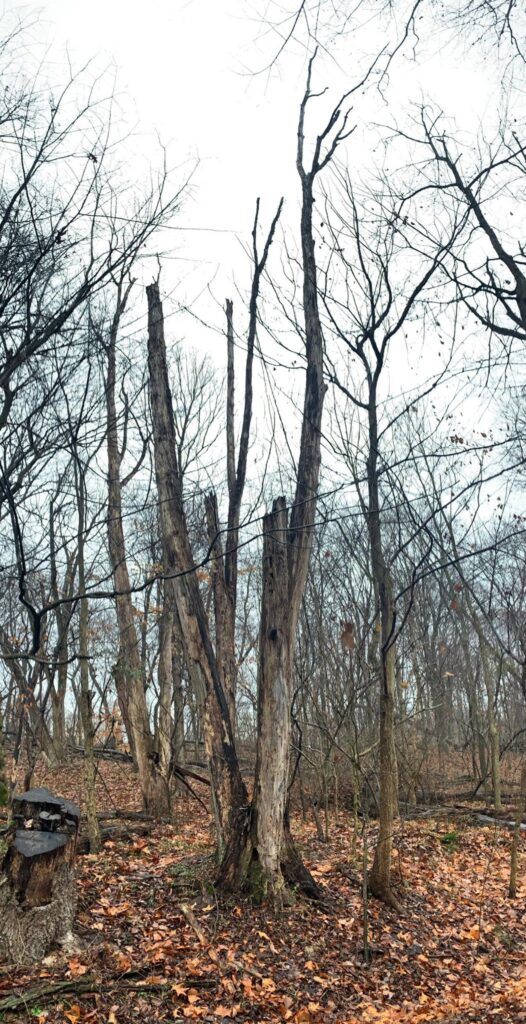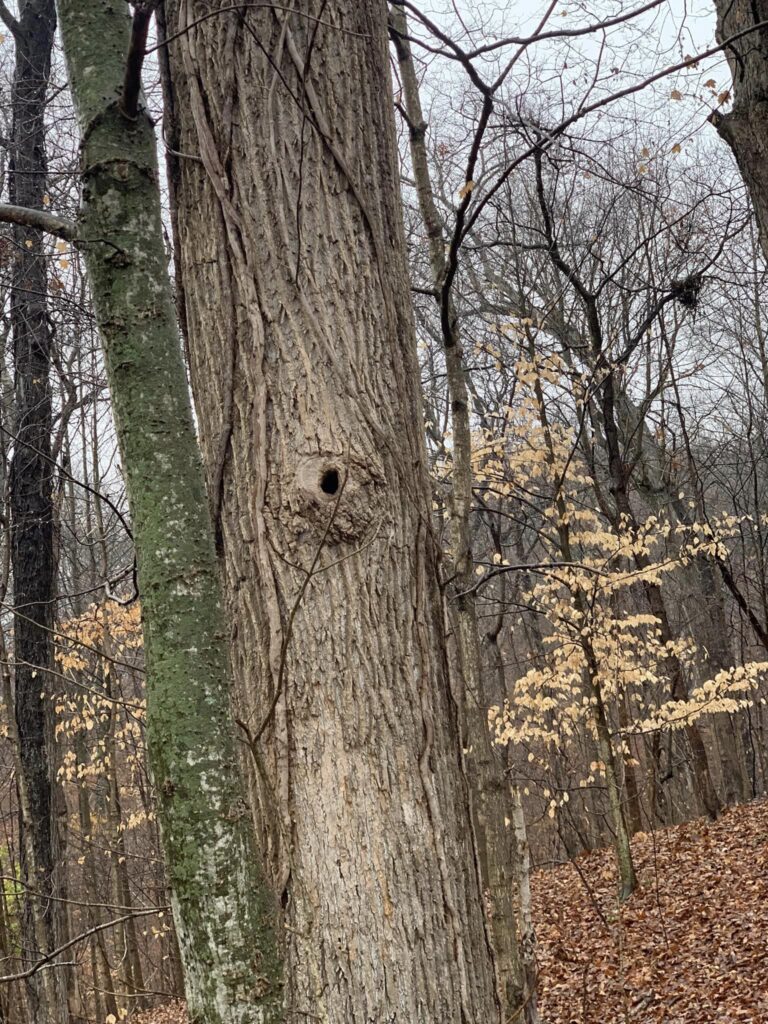The term “snag” is used to describe a standing dead or dying tree. While snags may appear to be value- less, they are actually very important for the survival of many wildlife species especially in the winter months. They provide habitat for animals such as raccoons, woodpeckers, opossums, squirrels, owls and many more species. Snags and cavity holes will stay warmer than the outside air, provide safety, shelter, and even food for some animals. Ideally, in a healthy woodland there would be around 5-7 snags per acres. Good habitat and den trees in Southern Illinois include but are not limited to American Sycamore (Platanus occidentalis), Beech trees (Fagus spp.), Sugar Maple (Acer saccharum), and any hardwoods (Quercus spp. and Carya spp.). You can create snags by girdling unhealthy trees, girdling is when you cut into the bark (into the cambium layer) around a tree 1-2 times about 6 inches apart from each other and then depending on the species apply herbicide into the cut. Girdling will allow the tree to slowly rot away in a more controlled way. Labeled below are some pictures of snags, cavity holes, and the animals that use them found around Southern Illinois.
The Benefits of Snags and Wildlife Trees
Categories:

 :Amy Frailey
:Amy Frailey




